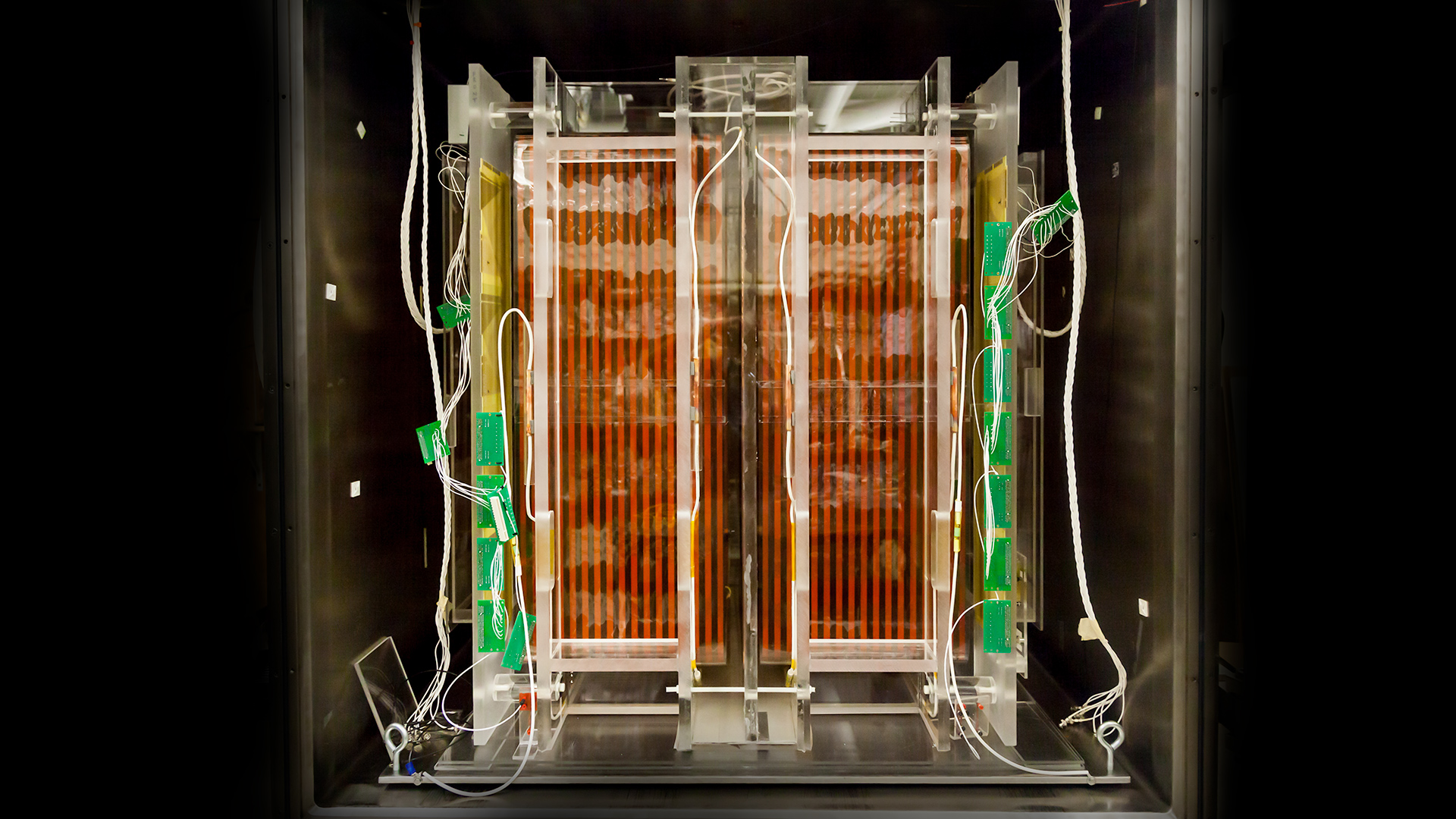Imagine walking undisturbed in the raging environment of a massive black hole. As you cross the violently swirling disc of multi-million-degree hot gas surrounding the hole, don’t worry about dangerous x-rays or twisted magnetic fields or high-speed plasma jets launched before your very eyes. Just experience the awesome power of a black hole. The setting is a scientifically informed installation—computer-modeled by photographer and artist Christopher O’Leary and projected from ceiling to floor in a 20-foot-wide swath of color, motion, and sound. Chris has been on an investigative journey, driven by a desire to make visceral, intuitive, and awe-inspiring works about natural processes as well as the scientific methods used to study them. Imagine rendering the many crowd-sourced searches for messages from aliens, or photographing a machine straining to detect the headwind of dark matter from the direction of Cygnus, or a gamma-ray telescope rotating on a dusty Arizona mountaintop as it opens its mirrors to the sky. These works are the purview of Chris’s new EMERGE project entitled Cloud Chambers. Chris strongly believes that art can help people intuitively understand—without invoking complex logic and physics—the mystery and wonder of the cutting-edge scientific research that has so vividly captured his imagination. He recently sat down with astronomer Linda Schweizer in his meticulously organized studio to talk about his plans.
Linda Schweizer: The 2013 black hole installation was one of your first scientific collaborations. Previously, your works were drawn from science fiction, comic books, futurism, popular film, surveillance, ecology, and more. What changed your focus?
Christopher O’Leary: It was a long path from what I had been doing for many years, and it sprang from my underlying interest in the sciences and programming, and also in fiction and science fiction. Previously, my work came solely from my imagination, and I controlled every aspect of its creation. It was fun and exciting, but also exhausting. The black hole collaboration really changed me, especially translating a physicist’s equations into the generative animation. Suddenly, a light bulb went off and I realized that I wanted to interface with the real world. At the same time, I felt that the motivation in science is very different from any other field—it’s encouraging and optimistic. If I can bring some of that to the arts, that would be great. I was still tying it all together conceptually when I visited the SETI Array [Search for Extraterrestrial Intelligence] and a dark matter detector. Then, by chance, I visited the Griffith Observatory in Los Angeles.
LS: What happened there?
CO: I noticed the Cloud Chamber exhibit in a corner of the lower level. The Chamber reveals particles that whizz through the atmosphere. I could not think of many devices that render something imperceptible, such as cosmic-ray particles, into human terms, and I immediately realized it was the perfect opening and metaphor for my new project. I want Cloud Chambers to explore how art and technology can bring cosmology to a human scale. For example, Griffith Observatory patrons staring at the Chamber realize that these cosmic-ray particles also pass through their own bodies, and though they may not understand the physics, they leave with the perception that they were touched by something from space.
LS: People can intuit the bubbly particle trails without necessarily understanding ionization or super-saturation of humid air. How did you translate that experience into your own artistic process?
CO: The particles of water vapor reminded me of pixels, which led to the idea of distorting photographic media to model and dramatize the behavior of the universe. My procedure is to photographically document the cosmic tools in situ, ask the scientists to explain the concepts that support their research, then bring back gigabytes of data, numbers, photographs—and sometimes equations—to my studio.
LS: How did you select the “cosmic tools” that are part of Cloud Chambers?
CO: There are many technological marvels designed to respond to the esoteric particles and energies filling the universe. I’ve visited a few sites already, including Whipple Observatory’s VERITAS gamma-ray detector in Arizona, SETI’s Hat Creek Radio Telescope Array, and Occidental College’s Drift II device for the detection of dark matter. The sites I’ve visited so far are, in plain truth, the ones I was allowed to enter as an artist. Next year, I hope to make further research trips to those international facilities that will grant me access.
LS: You have embarked on a highly ambitious, creative, and worthwhile project. What is your message, and with what audience do you hope to share it?
CO: I think insight is a big part of both art and science. It’s not only numbers, not only visuality, it’s having that moment where you “get it.” When I look at the VERITAS telescopes, they appear as flower petals made of mirrors. But what they do—with insane precision and at nano-second speed—is at the height of human ingenuity. It’s a broader, optimistic vision for what humans are capable of. I hope to bring that message not only to the arts and science communities, but also to educators, students, and anyone interested in art, science, and glimpses of the future.
